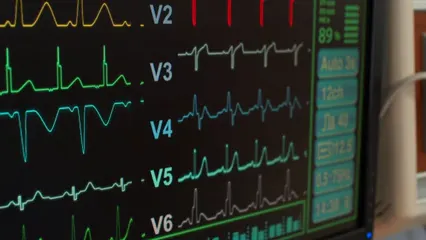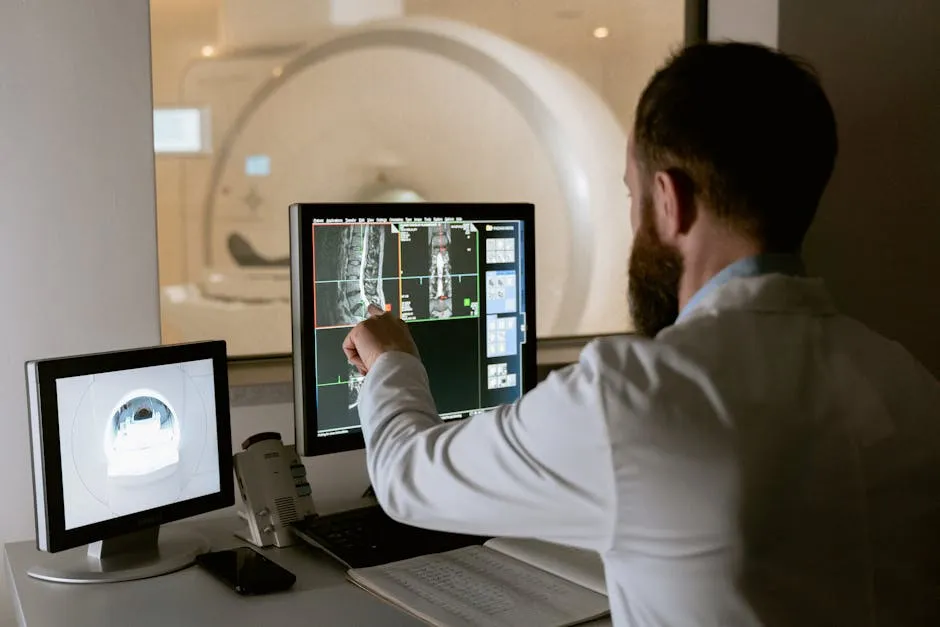Introduction
Have you ever wondered how doctors determine if a sore throat is due to strep? The Centor Score is a clinical tool designed for that purpose. It assesses the likelihood of Group A streptococcal (GAS) pharyngitis. This score is vital for guiding antibiotic treatment. By using it, healthcare professionals can avoid unnecessary prescriptions. This article targets medical professionals, students, and curious patients alike.
While you’re here, consider enhancing your medical toolkit with a Medical Terminology for Health Professions Textbook. It’s a great resource for brushing up on the language of medicine, making your patient interactions even smoother!

Summary and Overview
The Centor Score originated in the early 1980s. It serves to predict the presence of strep throat based on clinical signs. Accurate diagnosis is crucial. Misdiagnosis can lead to inappropriate treatment and complications. The modified McIsaac Score builds on the Centor Score, adjusting for age. This adjustment is especially important for children and adolescents. Throughout this article, you will learn about the Centor Score’s criteria, scoring, and its application in practice.
Consider having a Stethoscope on hand. This classic instrument is essential for any medical professional, allowing you to listen to heartbeats and lung sounds with ease. Plus, it adds a touch of professionalism to your outfit!

What is the Centor Score?
The Centor Score is a simple, effective measure. It helps determine the likelihood of GAS pharyngitis. The scoring criteria include four key factors:
- Absence of cough: A sign that suggests a bacterial infection rather than a viral one.
- Fever (≥38 degrees Celsius): Elevated temperature indicates a potential infection.
- Swollen and tender anterior cervical lymph nodes: These lymph nodes often react to infections.
- Tonsillar exudates: White patches or pus on the tonsils suggest a bacterial cause.
Each criterion earns one point, leading to a total score range of 0 to 4. A higher score indicates a greater probability of strep throat, guiding further testing or treatment.
For those late-night study sessions, a Digital Thermometer can be a lifesaver. Keep track of your health and ensure you’re in tip-top shape for your next exam!

The Need for the Centor Score
Strep throat, or streptococcal pharyngitis, is a common infection. It affects millions each year, especially children. Typical symptoms include a sudden sore throat, fever, and swollen lymph nodes. These signs can create confusion, as many other viral infections present similarly.
Distinguishing between viral and bacterial infections is crucial. Antibiotics work against bacteria but do nothing for viruses. Misdiagnosing a viral infection as strep throat can lead to unnecessary antibiotic prescriptions. This not only fails to help the patient but also contributes to antibiotic resistance.
Antibiotic resistance poses a significant threat to public health. When antibiotics are misused, bacteria adapt and become harder to treat. Consequently, infections that were once easily manageable can become severe. The Centor Score serves as a valuable tool to help clinicians determine the likelihood of strep throat. By improving diagnostic accuracy, it aids in appropriate antibiotic use.
For those who want to explore this topic further, check out the book Antibiotic Resistance: A Primer Book. It covers the impact of antibiotic misuse and how we can combat the growing problem of resistance!

Application of the Centor Score
How to Calculate the Centor Score
Calculating the Centor Score is straightforward. It uses four clinical findings, assigning one point for each present factor:
- Absence of cough: A sign that suggests a bacterial cause.
- Fever (≥38 degrees Celsius): Indicates a potential infection.
- Swollen and tender anterior cervical lymph nodes: Often reactive to infections.
- Tonsillar exudates: White patches or pus on the tonsils indicate bacterial infection.
Here’s a quick reference table for scoring:
| Criteria | Yes | No |
|---|---|---|
| Absence of cough | 1 | 0 |
| Fever (≥38°C) | 1 | 0 |
| Swollen cervical lymph nodes | 1 | 0 |
| Tonsillar exudates | 1 | 0 |
Interpretation of the Centor Score
Interpreting the Centor Score is essential for deciding next steps.
- Score 0-1: Low probability of strep throat. No further testing is needed.
- Score 2-3: Moderate probability. It’s advisable to recommend further testing, such as a rapid antigen test or throat culture.
- Score 4: High probability. Empirical treatment with antibiotics should be considered.
Follow-up actions based on the scores ensure patients receive appropriate care. By using the Centor Score, healthcare providers can make informed decisions that improve patient outcomes while reducing unnecessary antibiotic use.
And speaking of informed decisions, consider keeping a First Aid Kit handy. You never know when a medical emergency might strike!

The Modified McIsaac Score
Overview of Modifications
The McIsaac Score enhances the original Centor Score by incorporating age into its framework. While the Centor Score was designed for adults, the McIsaac Score allows for better accuracy in younger populations, specifically children aged three and older. In this modified version, points are adjusted based on the patient’s age, providing more precise evaluations.
For instance, if a patient is aged 3 to 14 years, they receive an additional point. Conversely, those over 44 years have one point subtracted from their total score. This adjustment acknowledges that younger patients often present differently compared to adults, making accurate diagnosis crucial for effective treatment.

Application of the McIsaac Score
In clinical settings, the McIsaac Score is especially useful for assessing children and adolescents with sore throats. Its age-adjusted criteria help clinicians identify patients who may need further testing or treatment for Group A streptococcus.
For example, a child aged 10 with a score of 3 might suggest a higher likelihood of strep throat than a 45-year-old with the same score. In children, a score of 2 or higher typically warrants a rapid antigen detection test or throat culture. This targeted approach minimizes unnecessary antibiotic prescriptions while ensuring those who need treatment receive it promptly.

Validation and Reliability of the Centor Score
Clinical Studies and Findings
Numerous studies validate the effectiveness of the Centor Score in diagnosing strep throat. Research demonstrates a strong correlation between Centor scores and the likelihood of Group A streptococcal infection. For instance, a study involving over 200,000 patients found that those with scores of 3 or 4 had a significantly higher probability of testing positive for strep.
Sensitivity and specificity can vary based on population characteristics. In younger patients, the modified McIsaac Score has shown higher diagnostic accuracy. This highlights the importance of adjusting clinical tools to fit specific patient demographics for improved outcomes.
By using these scores, healthcare professionals can make informed decisions about testing and treatment, ultimately enhancing patient care and reducing the risk of antibiotic resistance.

And to stay updated on the latest in medical research, consider subscribing to a Medical Journal Subscription (print version). It’s a great way to keep your knowledge fresh and relevant!
Limitations of the Centor Score
While the Centor Score is a helpful tool, it has limitations. It primarily focuses on four clinical criteria. This means it may overlook other symptoms or conditions that could indicate strep throat. Some patients may present atypically. For instance, older adults or those with chronic illnesses might show different symptoms.
Additionally, the score doesn’t account for coexisting conditions. Patients with allergies, for example, may have symptoms similar to strep throat. Such nuances can lead to misinterpretation. Therefore, relying solely on the Centor Score may result in missed diagnoses or unnecessary treatments.

Best Practices for Using the Centor Score
Incorporating the Score into Clinical Practice
Integrating the Centor Score into daily practice can enhance patient care. Start by training staff to recognize its criteria. Use the score as a decision-making tool rather than a definitive answer. Remember, it’s essential to consider the patient’s full clinical picture.
Educating patients is equally vital. Explain the scoring process and its significance. Help them understand why accurate diagnosis matters. When patients are informed, they’re more likely to engage in their care.

To help with patient education, consider having Educational Posters for Clinics displayed. They can be a fun way to engage patients and explain medical concepts visually!
Alternatives and Complementary Tests
The Centor Score works best in conjunction with other diagnostic tools. Rapid antigen detection tests are a prime example. They can provide quick results and confirm strep throat.
In some cases, further testing is necessary, even with low scores. For patients with persistent symptoms, a throat culture may be warranted. This ensures no underlying issues are missed. By using a comprehensive approach, clinicians can make informed decisions that better serve their patients.

Conclusion
The Centor Score is crucial for diagnosing strep throat. It helps identify patients who need further testing or treatment for Group A streptococcus. By streamlining the diagnostic process, this score can significantly enhance patient care.
Using the Centor Score promotes appropriate antibiotic use. This is vital for combating antibiotic resistance, a growing concern in healthcare. When used effectively, it leads to better patient outcomes and a more efficient healthcare system.
I encourage medical professionals to adopt the Centor Score in their practice. Integrating this tool can lead to better clinical decision-making and improved patient management. Let’s prioritize accurate diagnoses and responsible antibiotic use for everyone’s benefit.
And if you’re looking for ways to support your health, consider trying Sore Throat Relief Lozenges. They can be a quick fix for those pesky sore throat symptoms!

FAQs
What is the Centor Score used for?
The Centor Score helps diagnose strep throat and guides treatment decisions. It assesses the likelihood of Group A streptococcus in patients with sore throats.
How is the Centor Score calculated?
To calculate the score, assess four criteria: the absence of cough, fever (≥38 degrees Celsius), swollen anterior cervical lymph nodes, and tonsillar exudates. Each positive criterion adds one point, with a total score ranging from 0 to 4.
What does a high Centor Score indicate?
A high score (3-4) suggests a higher probability of strep throat. In such cases, further testing or empirical antibiotic treatment is often recommended.
Are there any limitations to the Centor Score?
Yes, the score may not capture atypical presentations or coexisting conditions. It’s essential to consider the full clinical picture for accurate diagnosis.
How does the McIsaac Score differ from the Centor Score?
The McIsaac Score modifies the Centor Score by incorporating age adjustments. Patients aged 3-14 receive an additional point, while those over 44 have one point subtracted.
What should I do if I have a sore throat?
If you experience a sore throat, consider consulting a healthcare professional. They can assess your symptoms, potentially using the Centor Score, to determine the best course of action.
For effective diagnosis, it’s essential to follow statistics for healthcare professionals on workplace safety 2024.
And for those who want to keep their workspace organized, a Medical Equipment Organizer Bag can be invaluable. Keep your tools at your fingertips and ready for action!
Please let us know what you think about our content by leaving a comment down below!
Thank you for reading till here 🙂
All images from Pexels




